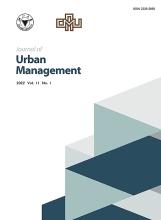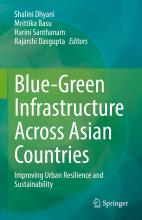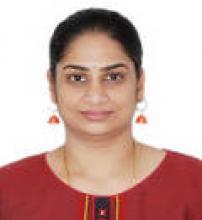Publications

|
Tejal Kanitkar co-authored Associate Professor , Energy, Environment and Climate Change Programme A methodology to correlate short-term regional climate action and long-term global temperature goals In: Current Science, Vol 122, pp 0689 |

|
Anindya Sinha co-authored Professor, Animal Behaviour and Cognition Programme The Rurban elephant: Behavioural ecology of Asian elephants in response to large-scale landuse change in a human-dominated landscape in peri-urban southern India https://link.springer.com/chapter/10.1007/978-981-16-3738-4_16 New Forms of Urban Agriculture: An Urban Ecology Perspective (Eds. Diehl J A and Kaur H). Springer Nature, Singapore, March 2022 pp. 289-310 In this chapter, we assess the impacts of such transformations on the lives of India’s largest land mammal, the Asian elephant and discuss the adaptations displayed by this species to human-induced change, with a particular focus on how the successful exploitation of rurban agricultural resources has allowed for the appearance of spatially and temporally flexible behavioural innovations that, in turn, have impacted the life-history strategies of a threatened elephant population in a peri-urban region of southern India |

|
Harini Santhanam, Rudrodip Majumdar Assistant Professors, Energy, Environment and Climate Change Programme Quantification of green-blue ratios, impervious surface area and pace of urbanisation for sustainable management of urban lake - land zones in India -a case study from Bengaluru city https://authors.elsevier.com/sd/article/S2226-5856(22)00018-8 Journal of Urban Management, Elsevier, 28 March 2022 The study describes the creation of four simple metrics to estimate: 1. the ratio of ‘green’ vegetated areas to the ‘blue’ water spread areas, defined as the ‘Green-blue ratio’ (GBA); 2. The ratio of ‘blue’ water spread areas to ‘built-up’ ratio around the lakes, defined as the ‘Blue to Built-up ratio’ (BBA), 3. the percentage of impervious surface area (ISA) and 4. the pace of urbanisation in the dynamic zones (DZ) of urban lake environments. |

|
Kuili Suganya, Mythrayi Harshavardhan, M B Rajani Kuili Suganya is PhD Scholar; Mythrayi Harshavardhan is Project Associate; M B Rajani is Associate Professor, Heritage Science and Society Programme The Significance of Ancient Water Systems and the Sacred Groves in the Landscape of Badami, Karnataka: A Geospatial Study https://doi.org/10.1007/978-981-16-7128-9_17 Dhyani, S., Basu, M., Santhanam, H., Dasgupta, R. (eds) Blue-Green Infrastructure Across Asian Countries. Springer, Singapore. This chapter discusses the modifications carried out in the landscape of Badami in Karnataka to harvest water for the settlement since its establishment as an Early Chalukyan capital in the seventh century. The chapter also highlights the significance of sacred groves in the historic landscape of Badami. The remnants of fortified walls, temples, water features, and sacred grooves testify to the ingenious engineering systems that existed in the past. |

|
Harini Santhanam co-edited Assistant Professor, Energy, Environment and Climate Change Programme Blue-Green Infrastructure Across Asian Countries: Improving Urban Resilience and Sustainability https://doi.org/10.1007/978-981-16-7128-9 Co-edited by Shalini Dhyani, Mrittika Basu, Harini Santhanam, Rajarshi Dasgupta. eBook ISBN 978-981-16-7128-9, Edition Number 1, 25 March 2022 (Co-edited) This edited book discusses Blue-Green Infrastructure (BGI) from conception to implementation in building resilience and urban sustainability. The book emphasizes on infrastructures, institutions, and perceptions as three main pillars of implementing and managing successful BGI, with a special focus on Asia. |

|
G Parthasarathy co-authored INSA Scientist, School of Natural Sciences and Engineering Anomalous mid-crustal basement beneath Deccan Volcanic Province as revealed by borehole investigations https://ficcibike.com/36th-geo-cong/ Proceedings of the 36th International Geological Congress, 20 March 2022 Mineral Chemistry and Geological studies on basement cores from deep boreholes drilled in Koyna seismogenic region also indicated that metamorphic fabric in them developed under amphibolite facies condition, similar to Killari. |

|
M Sai Baba Visiting Professor, School of Natural Sciences and Engineering Pi Day https://niascomm.in/2022/03/15/pi-day/ SciComm@NIAS, 15 March 2022 March 14 (3/14) is all about mathematics. It is Pi (3.14) Day and the International Day of Mathematics. Greater global awareness of mathematical sciences is vital to developing emerging areas like AI and understanding climate change. Mathematics is the common language of the planet, whichever way it is written. Sound mathematical knowledge is essential to progress in all domains of learning. Simplification is not only valid in mathematics, but it teaches us to simplify the complexities of life. |

|
Harini Santhanam co-authored Assistant Professor, Energy, Environment and Climate Change Programme Assessment of Socio-technical Constraints of Marine Fishers in the Utilisation of Marine Fishery Advisories in Southern Odisha, India https://doi.org/10.1007/s44177-022-00014-4 Anthropocene Science, 2022 (Co-authored with Sudip Kumar Kundu) A case study from Odisha, India on the socio-technical constraints among fishers to utilise the services of marine fishery advisories provided to them. |
